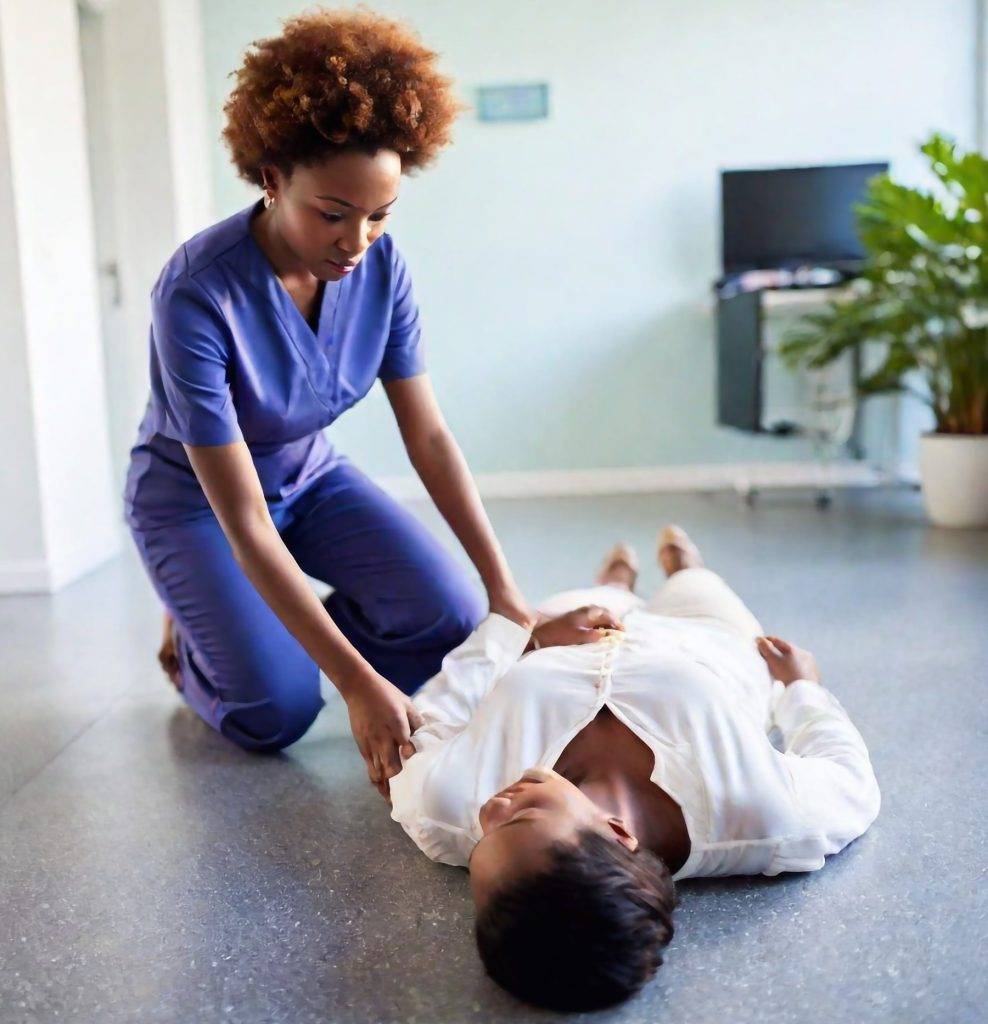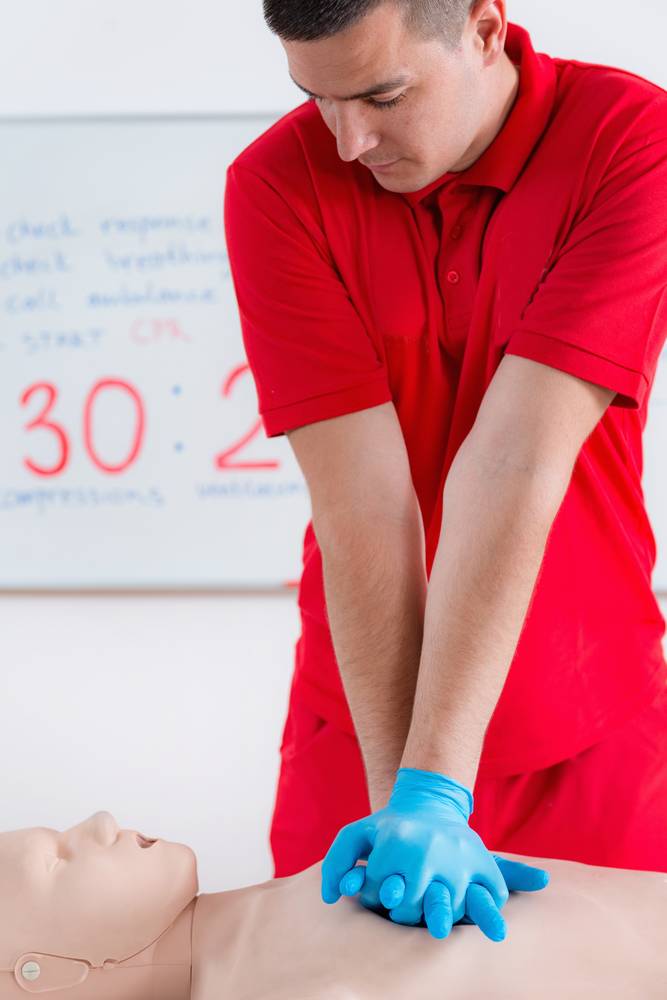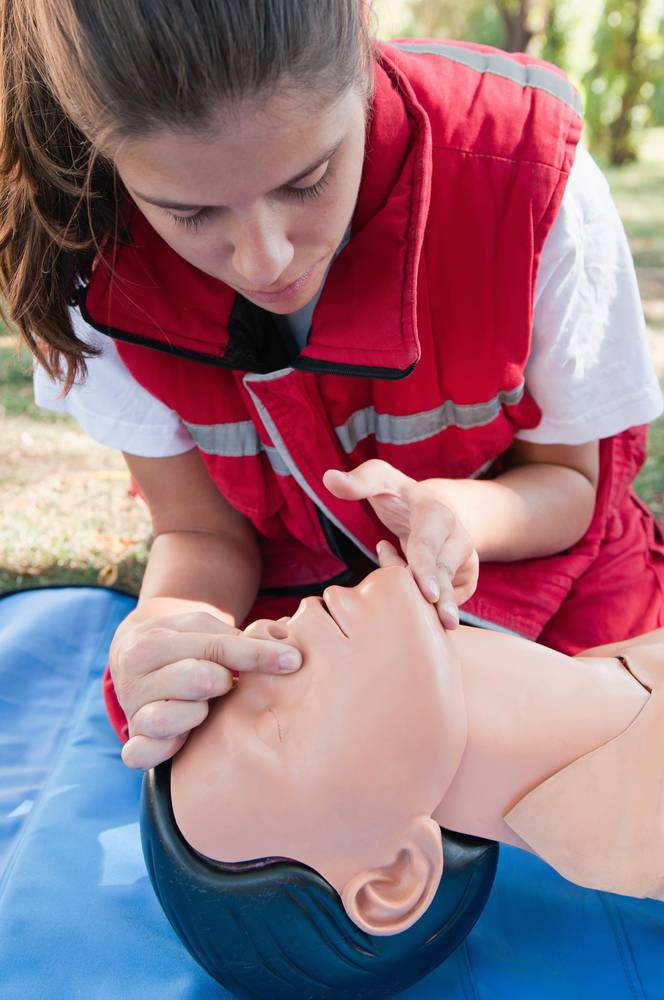Training and Assessment Delivered on Behalf of Allens Training Pty Ltd RTO 90909
How do we perform CPR? : A Comprehensive Guide
Toowoomba, I’ve got a question for you. When is the best time to learn how to perform CPR?
It’s not that hard and most of us can do it well after a little bit of practice. You’ve seen it done in the movies, it can’t be that hard, can it? The triple 0 operator can even coach you over the phone. So is there any point in actually going to a CPR course and learning how to do it “Properly”?
While all of that is true, I can tell you as an experienced first responder and first aid trainer, the WORST time to learn CPR is in an emergency.
The BEST time is right now, when you don’t need it!
Note: This is part 1 of a two part post. This part focusses on key skills needed to perform CPR well. Part 2 will look at common questions and concerns performing CPR that regularly come up in our Toowoomba First Aid courses.

What is the Importance of CPR in emergency situations?
CPR is our best first response when we find someone who is not responsive and not breathing. CPR done well in an emergency can mean the difference between someone walking out of hospital or not.
Bystander CPR performed by untrained first responders can still improve a person’s chance of surviving an out of hospital cardiac arrest. But that’s not the best we can do.
Study after study tells us that properly trained responders do better at assessing the situation, getting the proper help, give better CPR and get better outcomes.
In this post and the next we’ll be focussing on these key topics:
- The basics of how to perform CPR
- Common Questions and Concerns that come up in CPR courses
- Fixing common problems when it comes to CPR Technique
- How you can find the BEST CPR course that will have you ready to step up when the time comes.
(That last one is admittedly a bit biased, because we believe we provide the best training around and want you to train with us!)
At its most basic level CPR is made up of two parts – Chest Compression and Rescue Breaths. Before we look at How to Perform CPR, we need to know when to perform CPR
How to we know when we Perform CPR
To be able to get the best outcomes, you need to first ensure a couple of things before you start CPR:
- Keep yourself and the others around you safe
- Get help on the way as quickly as possible
- Assess the casualty’s responsiveness and breathing
- Then you can start CPR if needed.
When you put it like that, it can be a bit confusing. That’s why have an important tool to help us perform CPR correctly. Let me introduce you to the Doctors ABCD. (DRSABCD)
Each letter represents a key step in the process:
D – Check for DANGER
R – Check the casualties RESPONSIVENESS
S – SEND for help
A – Open the casualty’s AIRWAY
B – Check the effectiveness of their BREATHING
C – Start CPR
D – Attach a DEFIBRILLATOR and follow its instructions
We’ve written other posts on this action plan and you can find some of them here.
Put these steps together, and you have your complete plan for first response. For now, we’re going to drill down into the single step – C – Begin CPR.
How do we perform CPR?
As I said earlier in the post, CPR is made up of two key techniques – Chest Compressions and Rescue Breaths. For each of these, there are some basic things to get right. This is where you start to see the benefit being in a first aid course and having plenty of opportunity to practice. You can fine tune your skills and walk away confident that you can perform CPR to the best of your ability.
Chest Compressions
When I’m teaching my first aid courses, we always look at chest compressions first. Getting chest compressions started early can maintain the casualty’s chances of survival and you need to avoid mucking around.
When I talk about the mini-skills involved in good CPR, I like to break them down into two areas – The medical mini-skills that make a direct difference to the casualty and the “comfort” ones that make it easier for you to continue compressions for as long as possible.

Medical Mini-skills
Medically there are three mini-skills for us to focus on. They are:
- Location – Chest compressions are most effective and safest when they are performed on the lower half of the centre of the sternum. This means the heel of the palm of your hand needs to be on the centre of the sternum when looking across the casualty’s body. It also means (not counting your thumb) you need to have the part of your hand that’s closest to the casualty’s head in line with their armpit. This will be your index or little finger, depending on if you are left- or right-handed
- Depth – compressions are most effective when you hit 1/3 of total chest depth. When I talk about this in courses, it can freak people out a bit, as they worry about how to get it right. The relevant ANZCOR guideline on Compressions provides some important direction on this.
They say that the “ reality of being able to tell the difference between 5 or 6 cm and adjust compressions accordingly is questionable. Inadequate compression depth is definitely associated with poor outcomes. ANZCOR has elected not to put an upper limit on compression depth as the risk of too shallow compressions outweighs the risk of compressions that are too deep.”
In other words, we need to make sure are compressing far enough to do good, rather than worrying about going too far. More on that later - Rate – We aim to deliver our compressions at a rate of 100 – 120 per minute. When I teach my students, I get them to aim for 120 per minute or 2 per second. This is because the evidence shows that the longer we perform CPR, the slower we go. If we start at the upper limit of our speed, as we slow down, we are more likely to stay in above 100 BPM and get the best result for our casualty.
When performing CPR, getting these three things right equals the best possible outcome for a casualty.
Comfort Mini-skills
What about the “comfort” skills? While they don’t directly impact survivability, they are important because they help us give good compressions for as long as possible. Key comfort skills are:
- Make sure your knees are back a little from the casualty so you’re not too close. This makes your compressions less stressful on your body.
- Your shoulders should be directly above your hands when they are on the casualty’s chest. This means your weight is directly above the compression point.
- When you compress you can now bend from the waist with straight arms, rather than generate the compression from your arms alone.
Put together these comfort techniques help us get the most out of ourselves and mean we can give our best to the casualty.

Rescue Breaths
The second part of the CPR puzzle is Rescue Breaths. When it is safe to do so, we should be giving the casualty 2 rescue breaths for every 30 compressions.
Just like with compression, performing rescue breaths combine a few mini-skills so they are effective. Each time we deliver rescue breaths we need to:
- Open the airway. We do this by tilting the head back and lifting the casualty’s jaw up.
- Pinch the casualty’s nose, so that our breath doesn’t escape out that way. Not only is it less effective but you could give their nose an impromptu blow all over yourself if you’re not careful.
- Take a good breath of air
- Make a firm seal over their lips with yours. You should open your mouth as wide as you can and adjust it to the size and shape of the casualty’s lips.
- Exhale firmly into their mouth for about 1 second. Just enough to see their chest start to rise.
- Remove your lips and turn your head to look at their chest. You should see a steady fall in the chest.
- Repeat the process for the second breath and then resume chest compressions
What’s next?
That is the end of Part 1. In Part 2 of this post, we will look at common questions that come up about how to perform CPR
In the meantime – I’ve got a personal question for you – Are you ready to respond to an emergency?
Our training is designed to prepare you to be the best first responder you can be. Check out the courses we offer in Toowoomba to find out more.
Summary:
A Guide to Performing CPR: The DRSABCD Action Plan
This guide outlines the essential skills for performing Cardiopulmonary Resuscitation (CPR), a critical response for someone who is unresponsive and not breathing. While formal training is best, knowing the steps is vital.
1. Follow the DRSABCD Action Plan
Before starting CPR, always use the DRSABCD method to assess the situation safely and effectively:
- Danger: Check the area for any dangers to yourself or others.
- Responsiveness: Check if the person responds to touch or sound.
- Send: Call Triple Zero (000) for help immediately.
- Airway: Open the person’s mouth and check for blockages.
- Breathing: Check if the person is breathing normally.
- CPR: If they are not breathing, begin CPR.
- Defibrillator: Attach and use an AED as soon as one is available.
2. How to Perform CPR (30 Compressions: 2 Breaths)
CPR consists of two key techniques: chest compressions and rescue breaths.
Chest Compressions:
- Location: Place the heel of one hand on the lower half of the center of the sternum (breastbone).
- Depth: Press down firmly to one-third of the chest’s depth. Compressing too deep is less of a risk than being too shallow.
- Rate: Perform compressions at a fast rate of 100-120 per minute (about two per second).
Rescue Breaths:
- After 30 compressions, tilt the person’s head back to open the airway.
- Pinch their nose, create a tight seal over their mouth with yours, and give two steady breaths (each about one second long), just enough to see the chest rise.
Continue the cycle of 30 compressions followed by 2 rescue breaths until help arrives or the person shows signs of life.

